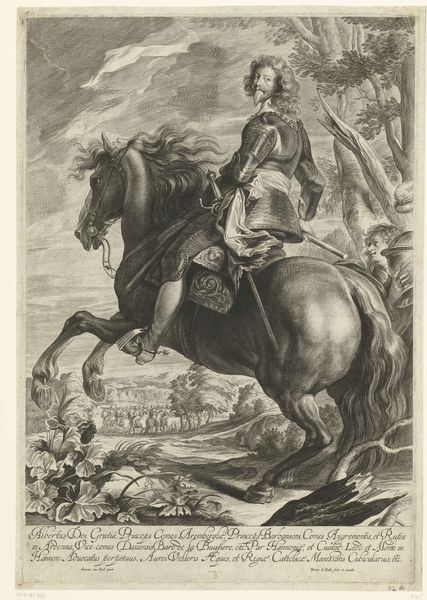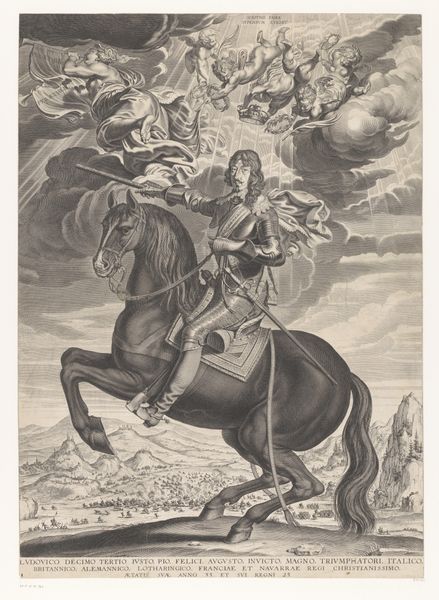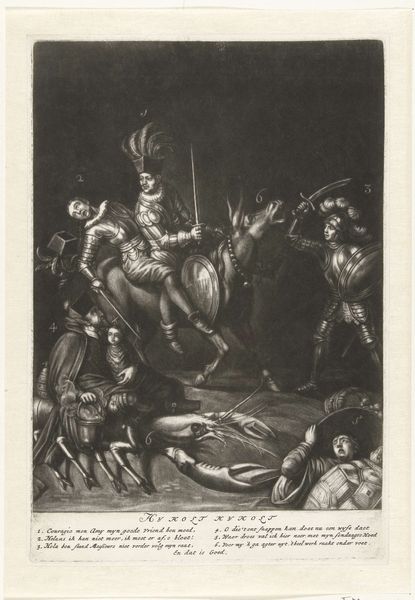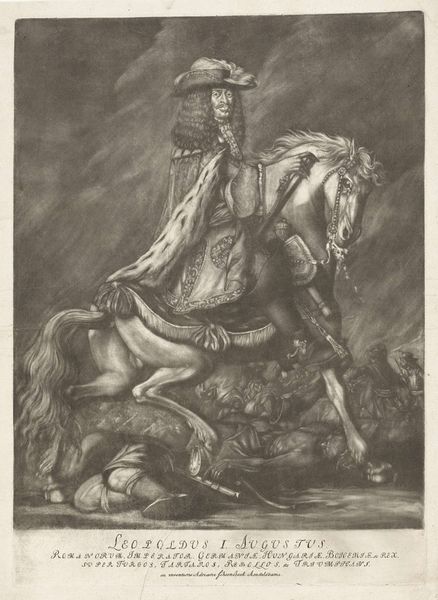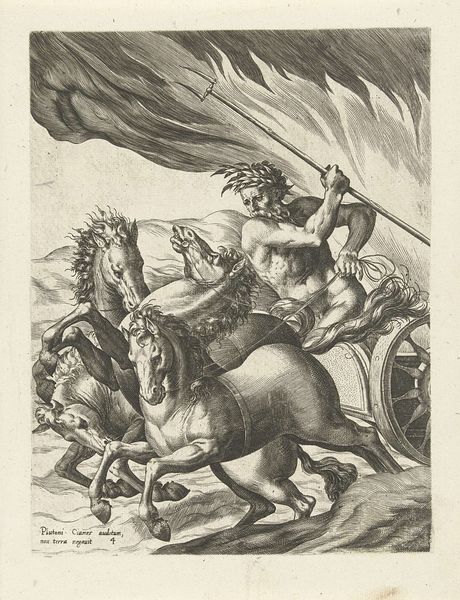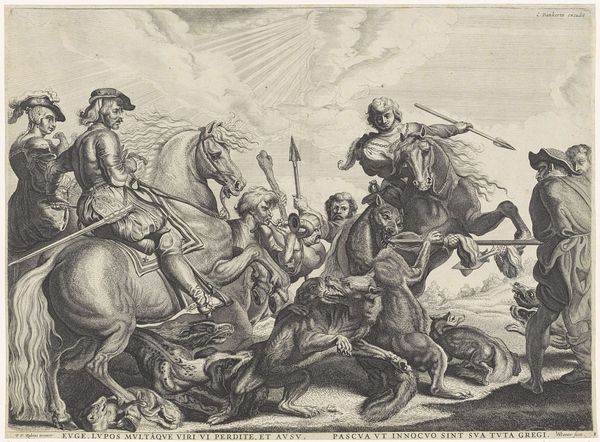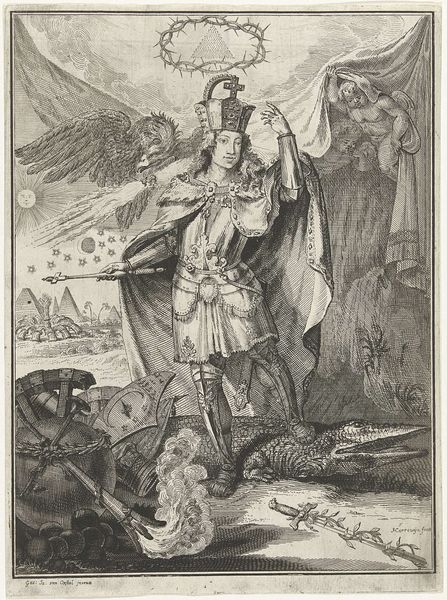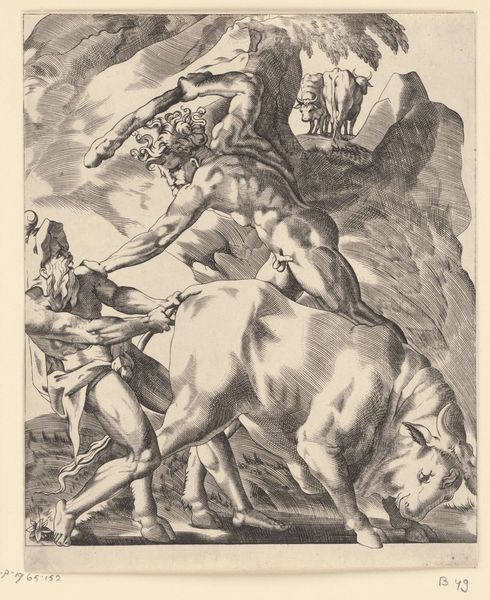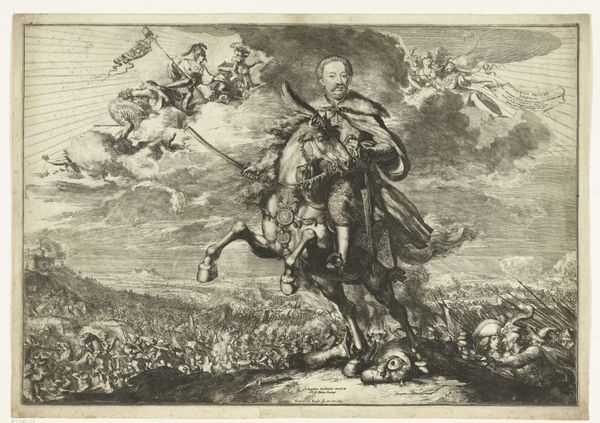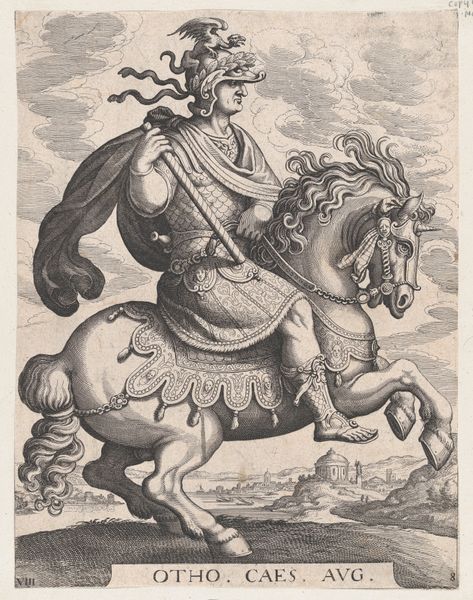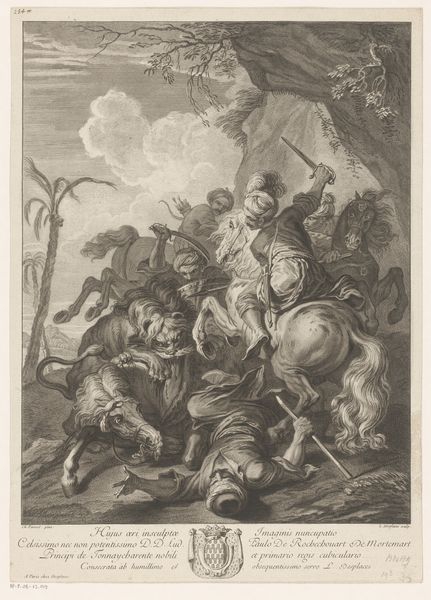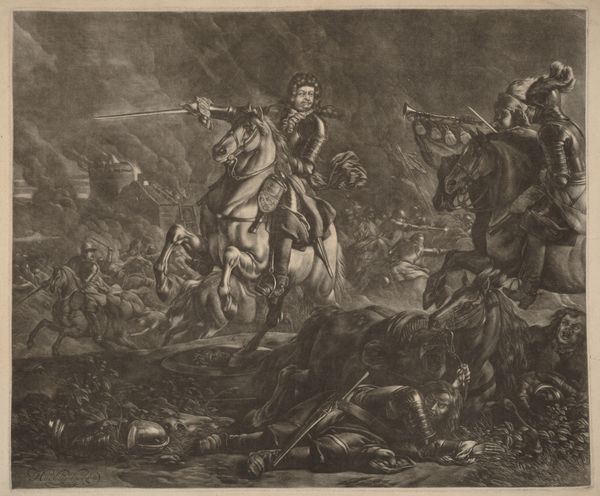
print, etching, engraving
#
portrait
#
baroque
# print
#
etching
#
portrait drawing
#
genre-painting
#
history-painting
#
engraving
#
erotic-art
Dimensions: height 255 mm, width 188 mm
Copyright: Rijks Museum: Open Domain
Curator: This print, found here at the Rijksmuseum, is entitled “Ruiterportret van Willem III, prins van Oranje.” It was made by Jacob Gole sometime between 1688 and 1724. Editor: The dramatic sweep of it really strikes me – the horse rearing, the battle raging in the background, William's confident gesture with his sword. It feels like a potent image of power. Curator: Indeed. It's a baroque portrayal of William III as a military leader. Consider the traditional symbols: the horse signifies strength and nobility, while his armor represents his readiness for battle. And the burning buildings behind him? Those likely signify conflict and dominance over adversaries. Editor: Looking at it through a critical lens, the heroic depiction sits uncomfortably with the actual history of conflict and conquest. There’s a strong tension, especially considering that he then became king during a time of evolving imperial power, which brings up narratives of violence against others. Curator: That reading does feel particularly acute when you notice the basin overflowing with severed heads in the bottom corner. These are trophies, emblems of subjugation. It is pretty gruesome. Editor: Absolutely, and this kind of imagery carries a lot of weight when we think about the visual languages of empire and its lasting impacts. Images such as these became ways to promote particular views. But seeing William III framed within the violence is hard to shake. It's a complex dance between propaganda and documentation, really. Curator: I suppose the skill here comes from its emotional intensity, though – no matter its specific interpretation, you have to give the artist credit for conjuring feelings of patriotic fervor. We're still analyzing it centuries later. Editor: Exactly, art allows these necessary discussions, no matter how unsettling it becomes, allowing conversations regarding politics, history and identity. This is what truly allows art to have power over its viewers.
Comments
No comments
Be the first to comment and join the conversation on the ultimate creative platform.
